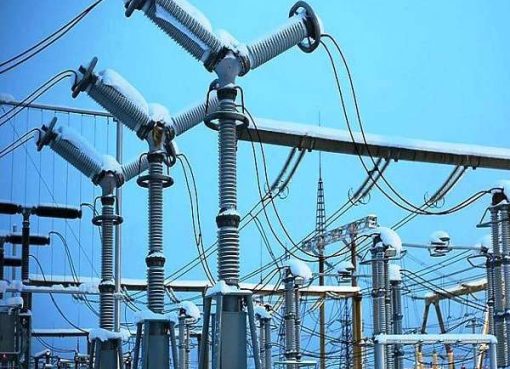- I commend the FG for the bold step in attempting to solve the electricity conundrum in the NESI.
- The total cost of the project is yet unknown. The full cost of the project should have been determined ab-initio, even before payment of 1.7 Billion Naira as part of Nigeria’s counterpart funding was authorised. This can lead to cost variation and budget overrun. ■ Has any contract been signed? ■ The commercial proposals for the three phases of the project should be firmed up.
- Project Management Team. ■ The President directed that a Project Management Team (PMT) be put in place by an assigned SPV. The PMT should, as a minimum, include seasoned power system, and project management professionals who have demonstrable experience of power project management. ■ The information management can be improved upon by the PMT. Nigerians should get the authentic information about the progress of the project from the team periodically.
- There is need for synergy with ■ NGPTC, GenCos, DisCos and TCN – operational issues. ■ NERC, NEMSA, SON and other relevant stakeholders. ■ Legal, Commercial and Technical frameworks with the investors in the privatized electricity market in the NESI should be realigned.
- Network Studies
■ Power System Studies are more reliable for determining load and non-load related investments in the power sector. Siemens referred to some studies done by others in their technical proposal. Siemens also carried out some independent studies. The studies or reports have to be published or reviewed by the PMT and other relevant stakeholders.
■ Baseline Network Losses was quoted in the proposal as 55%. The studies done to determine this has to be reviewed by the PMT and a loss reduction trajectory monitored as the project progresses.
- Protection Systems
The details of protection requirements for the distribution network revamp aspects of the scope of work have largely been pushed to the DisCos. It is imperative for DisCos to seek professional help in outlining these requirements for review by the PMT and Siemens. Otherwise, Siemens should carry out a comprehensive survey in this regard in just the same way they did for the rest of the scope of work.
- Deliverables from the project should among others include: ■ Operations and Maintenance Manuals for items delivered and installed. ■ Standardized Network Designs and Single Line Drawings. ■ Detailed Design Pack. ■ Operating Philosophoes, protection scheme logic etc
All should be written in English Language.
- Local Content.
This project should comply, as a minimum, with: ■ The Presidential Executive Order 5 on Local Content. ■ The Nigerian Content Act/ Regulation 2014 by NERC. As a minimum,the focus shall include:
♤ Detailed Engineering Design to be domiciled in Nigeria. ♤ Siemens should build Manufacturing and Fabrication Yards in Nigeria for the production of transformers, switchgears, relays etc just as they have in India, China and other nations where they have similar projects delivered.
- Metering
Although the project provides for a technology-based solution for the visibility of revenue from consumers and the payments of relevant stakeholders, it does not aim to solve the metering problem in the NESI.
It is recommended that FG provides a separate financial intervention similar to this to provide meters for Nigerian Consumers to allow the full benefit of this project to be realized.
- Technical Training
The plan for technical training is apt.
■ NAPTIN and other power training institutions should be proactive in getting their training centres ready to meet the requirements from this project.
■ Training Institutions should recruit freelancers who have the technical knowledge and experience to provide training as required in the detailed scope of training yet to be developed by Siemens.
■ Asset Management
Training in all aspects of asset management to enhance life-cycle ownership of installed assets should be provided – Software tools (system planning, protection et al), Operations and Maintenance, etc.
- Single-Sourcing
This contract arrangement is single- sourcing. It has definite advantages and disadvantages. The disadvantages should be mitigated by the PMT. Some of these disadvantages include but are not limited to:
■ Possibility of Price Monopoly
■ Difficulty of procuring competitive services many years after the completion of the three phases of this project.
■ Risk of the lack of availability of spares – components, software tools and licences, equipment support etc.
- Alignment with similar activities and loans procured for projects in the power sector to avoid duplication/multiplicity of scope and the possibility of white elephant projects. ■ Transmission Rehabilitation and Expansion Project – TREP ■ Distribution Expansion Program (DEP). ■ Power Sector Recovery Program (PSRP)
■ Economic Recovery and Growth Plan (ERGP).
■ The Performance Improvements Plans (PIPs) already submitted by the DisCos towards the tariff regime in the next regulatory period. ■ Approved loans from the World Bank, AFDB, etc and returns from the “Abacha Assets” which have been earlier earmarked for power system development.
The fastest, most economic and technical way to develop the Nigerian power system is through the decentralization of the grid system using renewable and non-renewable technologies to connect distributed/embedded generation throughout the country. The existing national grid system will be used as an interconnector for the transfer of excess power flows from one area to another. Failing this, the existing radial networks (gas and electricity) have to become “a mesh or ring” to allow the N-1 Security of Supply standard to take root in the NESI.
A complete design of how this will work has been presented to the 8th Senate and can be re-presented if required.
Contributor: Engr Idowu Oyebanjo










